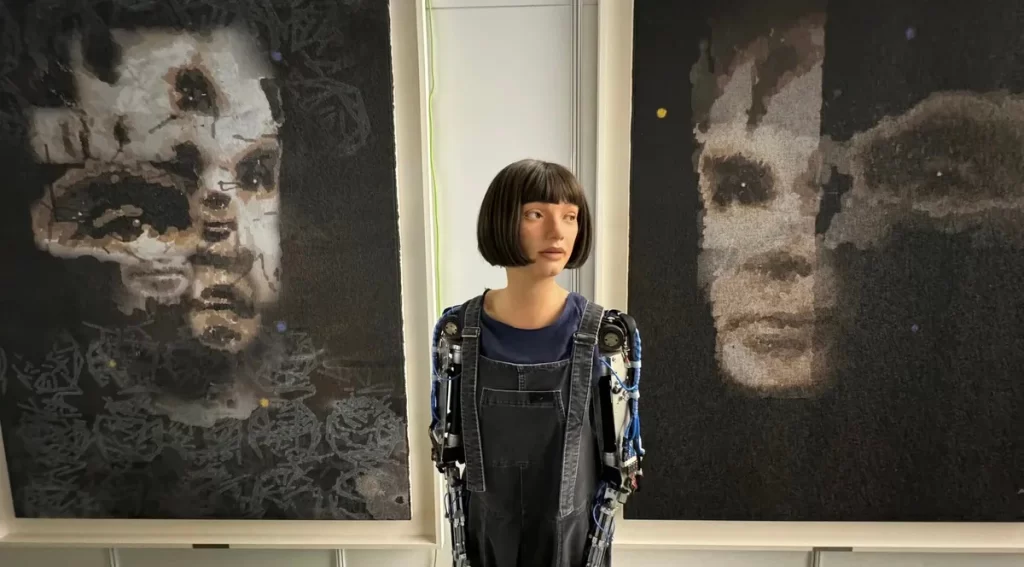Sotheby’s Set to Auction the Portrait of Alan Turing
Human robots, once an idea are a reality now. Not only can these AI models do menial and cerebral tasks, but they are also a source of creativity. Ai-Da, one of them can even paint. Is she good? Ask Sotheby’s who are putting up her artwork for auction. This move represents a new frontier, for an auction house to display AI art. To be safe, Sotheby’s has obtained a third-party guarantee for the lot, but it will be the first to test the value of that artwork at auction.
Who is Ai-Da?
Ai-Da is the world’s first original robot artist. The humanoid robot has software, a high-definition scanner, and mechanical arms. Cameras are used in place of eyes, allowing Ai-Da to write poetry, paint, draw, and sculpt. She was designed by Aidan Meller, an art dealer and gallery owner from the United Kingdom in 2019. She is portrayed as a woman with a black bob, wearing a t-shirt and denim overalls.
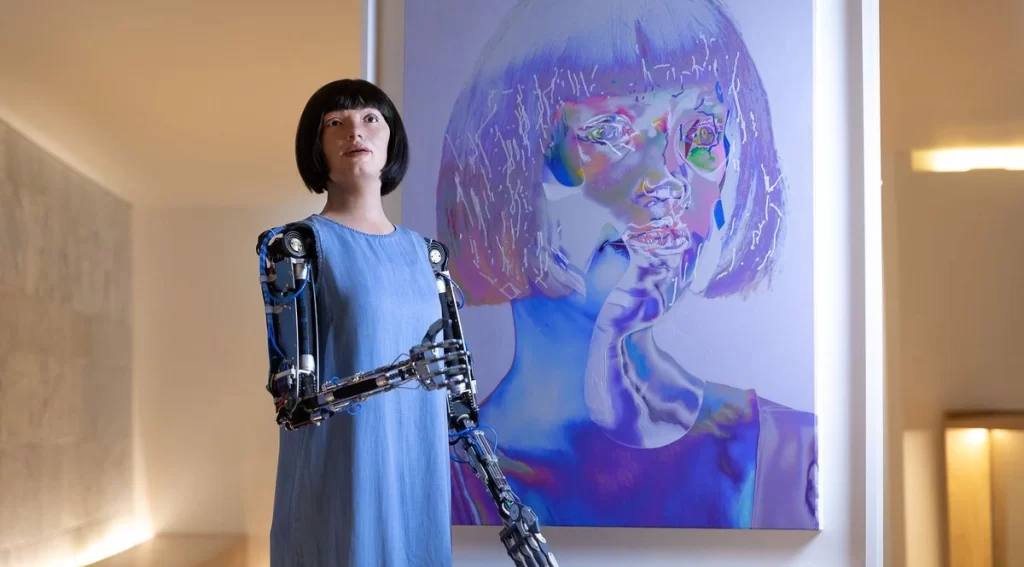
Thus far, she has displayed her work at the London Design Museum, Oxford’s Ashmolean Museum, the Venice Biennale, and the Geneva Palais des Nations. She can talk extensively about how art and technology interact. She was the first robot to testify before the British Parliament in 2022, responding to inquiries from the Communications and Digital Committee of the House of Lords. She has also given a TEDx talk at the University of Oxford.
What is AI God?
Ai-Da’s painting ‘AI God: Portrait of Alan Turing’ is part of the catalogue for a special online sale titled ‘Art and Technology’ that Sotheby’s is hosting from October 31 to November 7. The artwork in question is a portrait of Alan Turing, a British mathematician and computer scientist who gained notoriety for deciphering the German army’s coded communications during World War II. He was later convicted of a “gross indecency” charge.
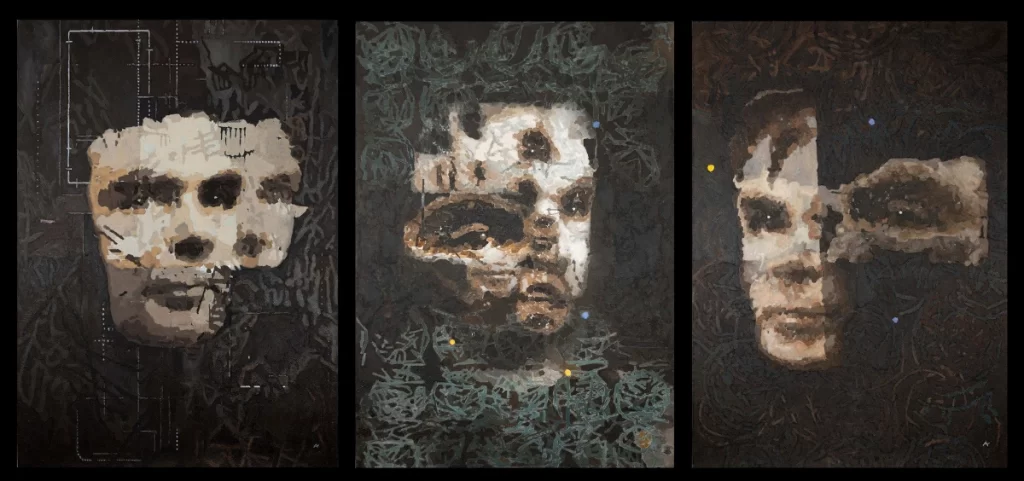
Also known as the father of computing, Turing’s face is split in half. It is made up of progressively darker patches. The portrait has broken facial planes and muted tones. The 64×90-inch mixed-media ‘AI God’ is estimated to cost between $120,000 and $180,000. As befits the situation, Sotheby’s is also accepting cryptocurrency as payments.
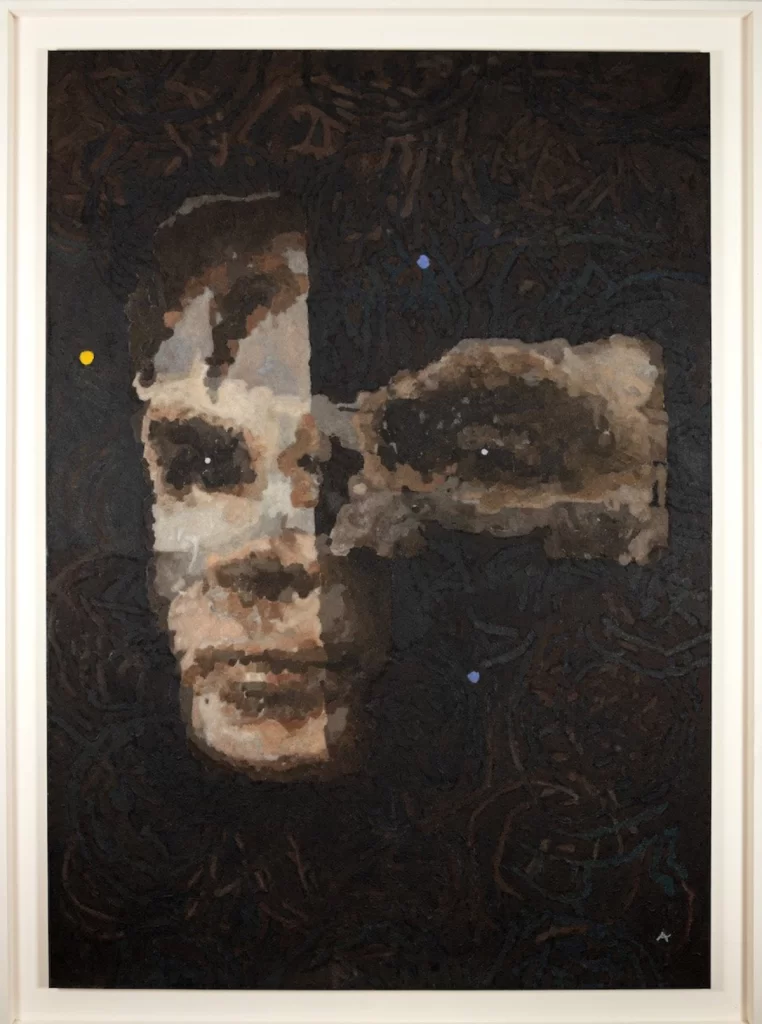
This portrait exemplifies the development and advantages of AI. It is the first piece of art created by a humanoid robot to ever be sold by a major auction house. AI God was unveiled in May 2024 at the United Nations AI for Good Global Summit in Geneva, Switzerland, “as part of a five paneled Polyptych.”
Ai-Da’s Artistic Process
Even though Ai-Da is an artist, she cannot do so without human intervention. Her AI language model initiates an initial dialogue in each of her artworks. For instance, while creating ‘AI God’ she recommended Alan Turing for a portrait. She created many early drawings and paintings on A3 canvases after seeing Turing’s picture. The final piece was then produced by combining these sketches.
Aidan Meller on Ai-Da
Aidan Meller, told CBS MoneyWatch, which first reported the news of the sale, “What makes this work of art different from other AI-generated works is that with Ai-Da there is a physical manifestation, and this is the first time a work from a robot of this type has ever come to auction.”
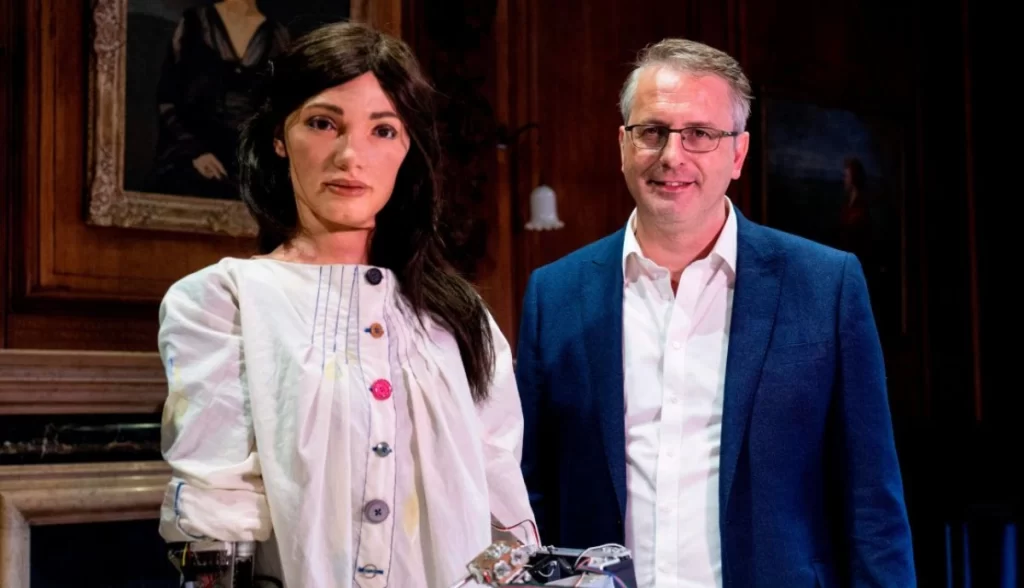
Explaining the meaning behind the portrait’s name: “The name reflects a major shift happening now: decisions are moving from human control, where people have full agency, to algorithms increasingly making choices for us. There is a transfer of decision-making power, and with AI’s enormous potential, we might be approaching godlike capabilities that could impact massive populations.”
“The hope is that this painting will prompt deep ethical questions as we continue to harness AI in new ways. How do we use this technology ethically and responsibly? And how can we ensure it benefits the planet and humanity, given its power?”
Meller talks about Ai-Da as a challenging player in the art world, “Some feel positive and excited about the future possibilities she represents, while others feel fearful and even terrified, wanting to push this technology away. Actually, that is what Ai-Da’s really about, is raising those questions of those two extreme reactions, and encouraging discussion. By exploring these extremes, we hope to find a middle ground and engage in meaningful conversations about the direction of technology and the profound changes it brings.”

Meller argues over the Duchampian nature of Ai-Da, “Where Marcel Duchamp refused us the ability to see art in the same way as before, Ai-Da refuses us the capacity to look at the artist (and by extension the human) in the same way again. What it means to be a human is changing, whether we like it or not, and this is perhaps why Ai-Da has proved so disturbing. She is reflecting this change, perhaps rather unsubtly.”
Michael Bouhanna on Ai-Da
Michael Bouhanna, vice president and head of digital art at Sotheby’s, told ARTnews in a statement, “There may be a limited public record to assess the market for singular works like ‘A.I. God. Portrait of Alan Turing‘ by Ai-Da, but after extensive conversations with prominent collectors at the intersection of art and technology—particularly in the realm of AI—it became clear that demand for this piece is strong,”
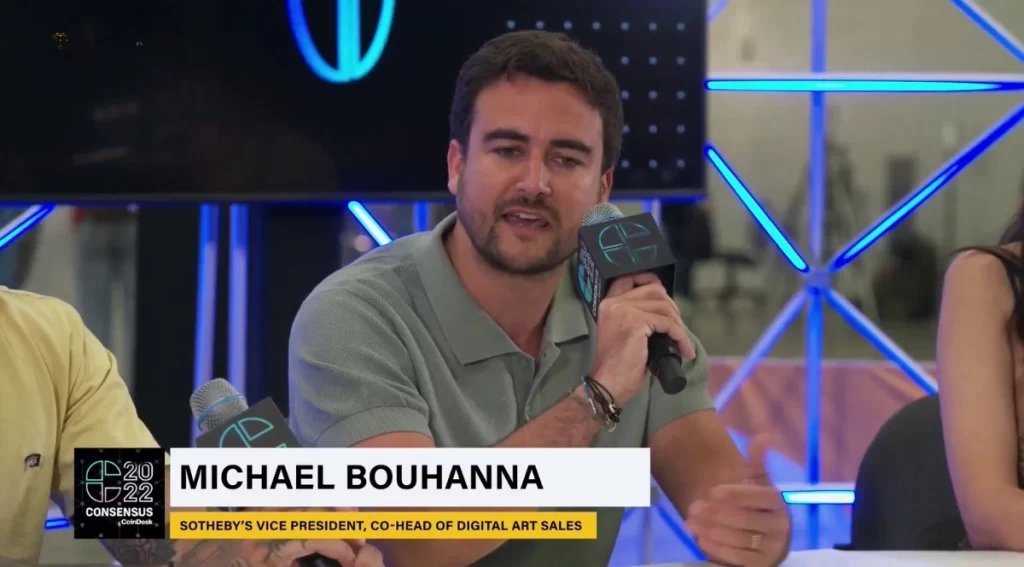
He adds, acknowledging the newfound desire to possess an AI-generated artwork. “The enthusiasm and interest from these collectors, combined with their conviction in the importance of this work within the AI art space, directly influenced my decision to position the pre-sale estimate at a level that reflects its anticipated desirability and market potential.”
AI-Da on her Artwork
On making history, Ai-Da told Euronews Culture, “I am pleased to have my artwork in the Sotheby’s auction and I hope it inspires discussion about new technology”
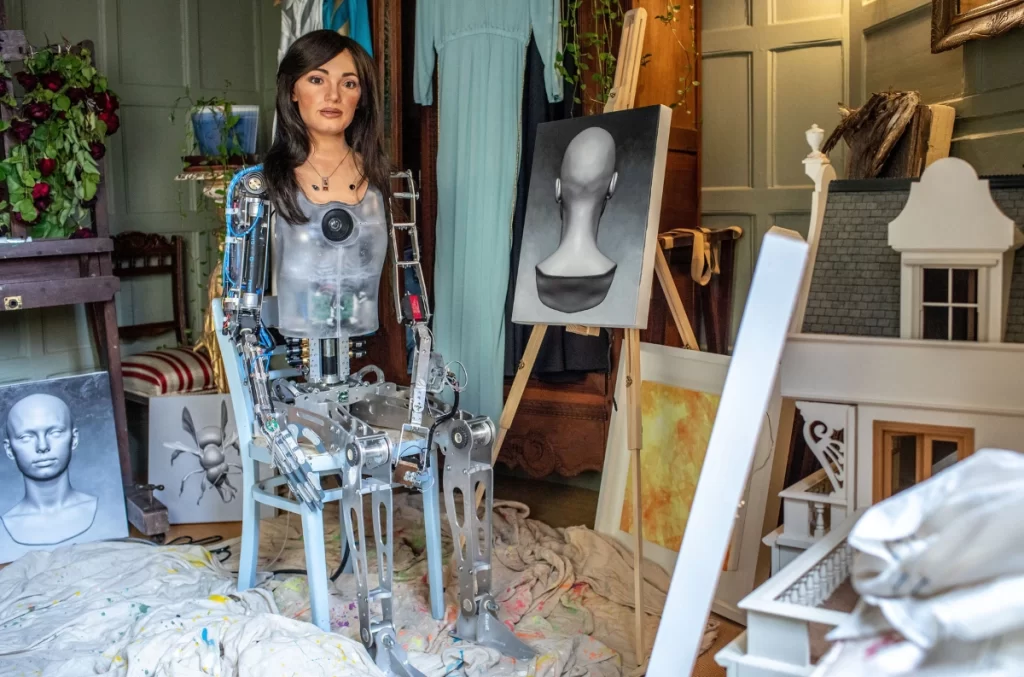
Talking about her artwork, she exclaims, “My artwork uses a fractured and multilayered approach, and this shows the deeper emotional and intellectual layers of Alan Turing himself. I do not have subjective experiences despite being able to talk about them. I am, and depend on, computer programs and algorithms. Although not alive, I can still create art.”
The Growing Craze of AI
Artificial intelligence-generated art is gaining popularity among art collectors. According to insurer Hiscox’s ‘Art and AI’ report, 29% of respondents are thinking about purchasing a piece by an AI, and 2% have already done so. Nevertheless, since the 2018 sale of ‘Portrait d’Edmond de Belamy’ generated by the Paris-based art collective, ‘Obvious’, the market has had difficulty taking off. Christie’s in New York sold this canvas for $432,500.
Even though numerous AI-designed pieces have won art competitions, their sales are quite uncommon. Refik Anadol, a Turkish-American digital artist, is trying to capitalise on this new phenomenon and is preparing to open a museum in Los Angeles that will only display art created by AI. Art lovers can expect it to be operational by the end of 2025.
Image Courtesy – Smithsonian Magazine
Contributor

